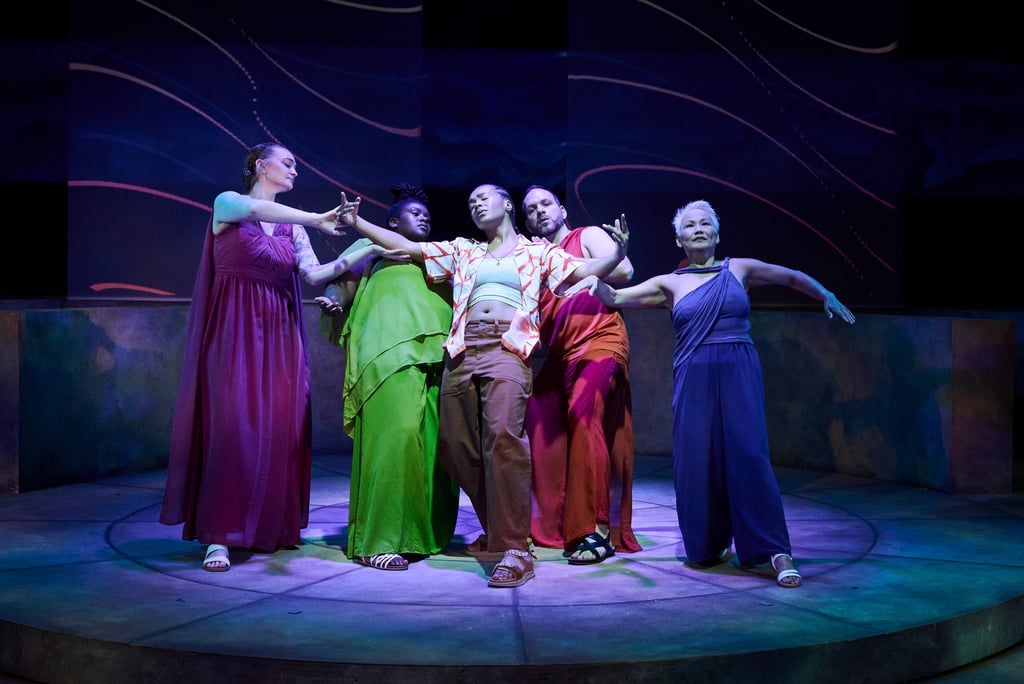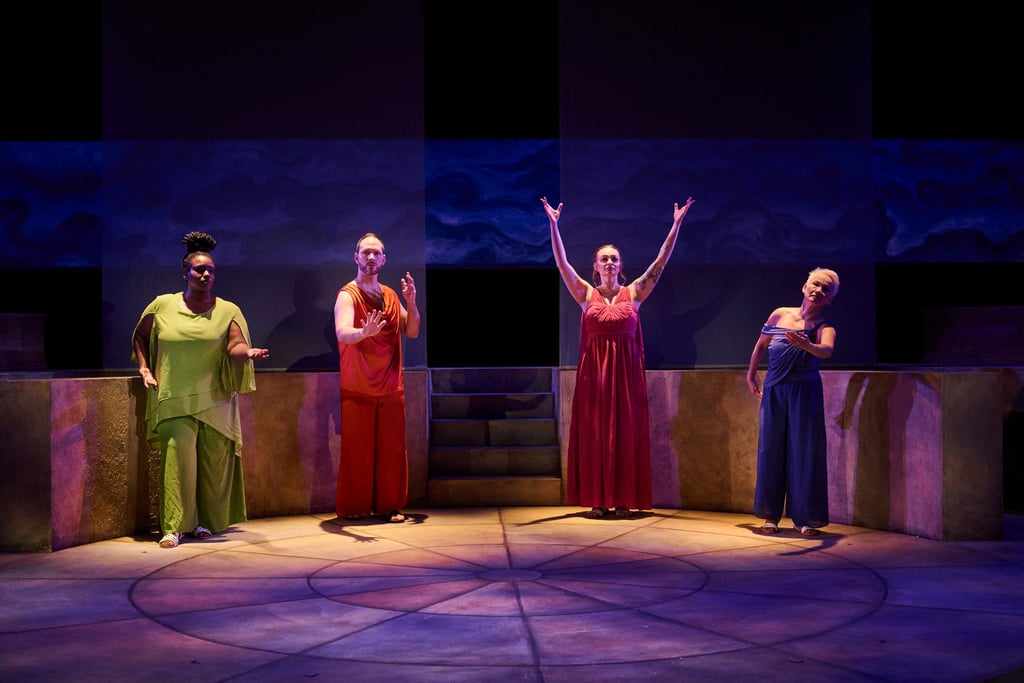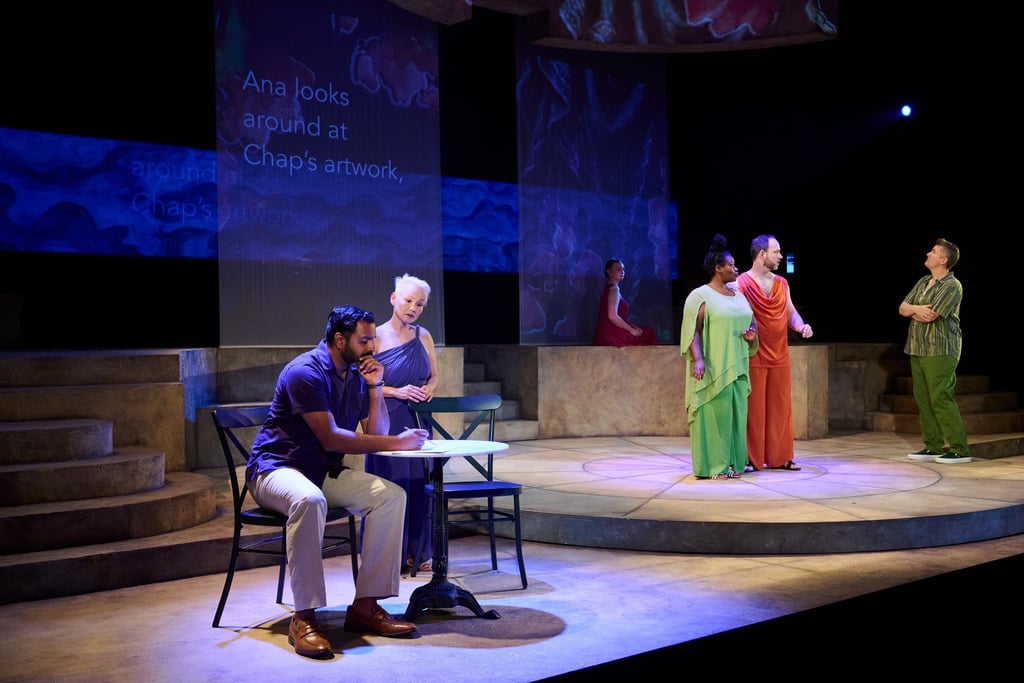Seeing the Silence: ASL in Another Kind of Silence
The play resists the idea that Deaf characters or ASL only belong in stories “about” deafness. It instead puts Deaf and hearing characters on equal footing and focuses on the universal feelings of love, temptation from the “greener pastures”, and the “seven-year itch.”
Mingsi Ma
9/30/20254 min read


Another Kind of Silence, photo courtesy of City Theatre. Left to right: Amelia Hensley, Hope Anthony, Kaia Fitzgerald, Thomas DellaMonica, and Monique Holt.
The world premiere of playwright L M Feldman’s Another Kind of Silence by director Kim Weild at City Theatre truly amazes me with its bilingual conception in ASL and English, shifting my sensory priorities as an audience. The play resists the idea that Deaf characters or ASL only belong in stories “about” deafness. It instead puts Deaf and hearing characters on equal footing and focuses on the universal feelings of love, temptation from the “greener pastures”, and the “seven-year itch.”
As writer Evan travels to Greece with her composer husband, Peter, she meets an artist named Chap, who works in a café run by her partner, Ana. The story unfolds as Evan and Chap develop a deeper connection. In the story, Evan and Peter are hearing, Chap is Hard-of-Hearing, and Ana is deaf. Starring Chatherine Gowl, Anil Margsahayam, Kaia Fitzgerald, and Jules Dameron, the production mirrors the character design by casting actors with the same lived experience.
The staging is bilingual in ASL and English, and sometimes it even incorporates Greek Sign Language (GSL), resulting in something truly inventive. Each character is shadowed by a chorus dressed in ancient Greek style, who voices or signs their thoughts, making the inner life of each character theatrically legible and serving as their ego, or the id. The four choruses are played by Amelia Hensley, Thomas DellaMonica, Hope Anthony, and Monique Holt. All the chorus-character pairs wear matching costumes in the same color scheme. Following the ancient Greek tradition, the choruses also advance the storyline and occasionally serve as the narrators.


Another Kind of Silence, photo courtesy of City Theatre. The four choruses Amelia Hensley, Hope Anthony, Thomas DellaMonica, and Monique Holt.
Far from being “another accessibility add-on,” the ASL performance, combining with Visual-Gestural Communication in Silence, contributes heavily to the play’s aesthetics. Thanks to Monique Holt, also the Director of Artistic Sign Language (DASL, pronounced as “Dazzle” – isn’t that beautiful?), the ASL here is graceful, poetic, imaginative, and almost tangible. It may sound obvious to point out that ASL and the associated visual-gestural communication are visual languages, yet that is precisely what struck me about this performance. The actors’ ASL helps shape the surrounding space, and from time to time, it felt less like dialogue than a form of moving imagery I could almost touch. Despite having a very simple stage setup and almost no props, my imagination goes wild along with the sign language: plunging into the icy currents of the Mediterranean Sea, picking wild figs from the tree, seeing the drifting octopus, and standing on a floating dock. When Catherine Gowl and Kaia Fitzgerald, playing Evan and Chap, curve their hands with one hand topping the other, their fingers ripple in delicate waves, and two swimming octopi appear right before our eyes.
Amelia Hensley, who plays Evan’s chorus, leaves a deep impression on me with her vivid acting as she signs. Her energy is incredibly infectious. I find it hard to move my eyes away from her, especially when she performs the inner feelings of Evan, whether it’s rolling her eyes, pouting, or raising her eyebrows with joy. Hensley has a comical interpretation that externalizes and heightens Evan’s feelings. Her performance guides us on how Evan begins to develop feelings for Chap and the conflicts between the unfaithful desire and rational thoughts.
In Silence, I keep wondering how Ana’s being Deaf and Chap’s being Hard-of-Hearing actually contributes to the story. In one brief section, Chap reveals her frustration with Ana, saying that “something is missing” in their relationship and that she misses talking. Yet until that moment, there is little buildup in the plot that establishes Chap’s resentment. As a side note, Ana and Peter seem to function as symbols of stability or as straightforward partners who are betrayed by their significant others. Both characters ultimately feel predictable within the love struggle.


Another Kind of Silence, photo courtesy of City Theatre. Left to right: Anil Margsahayam, Monique Holt, Amelia Hensley, Hope Anthony, Thomas DellaMonica, and Jules Dameron.
The staging of the production clearly aims to bridge English and ASL, and while largely successful, some moments remind me of the complexities inherent in bilingual storytelling. The stage is arranged symmetrically, with staircases on both sides and a circular center. Whenever two characters converse, four actors appear. Among them, two deliver lines in English and two sign in ASL. I have to admit that I feel sensory overload after sitting there for a while. At times, the characters and their choruses stand apart from one another. With multiple focal points across the stage, some speaking, others signing, and live captions projected above, my attention is pulled thin in every direction.
Nonetheless, it also gets me thinking about the reality of living in a soundless world. Perhaps what I experience actually resembles the consciousness fatigue that the Deaf or Hard of Hearing community experiences every day — a constant need to pay attention to the surroundings and the visual cues, as well as to combat the fear of navigating unfamiliarity when interacting with a hearing-centric world. With Silence challenging my sensory priorities, I am grateful for the opportunity to be educated about the Deaf community. We need more work like this.
City Theatre’s showing of L M Feldman’s Another Kind of Silence will run from Saturday, September 20 - Sunday, October 12, 2025.